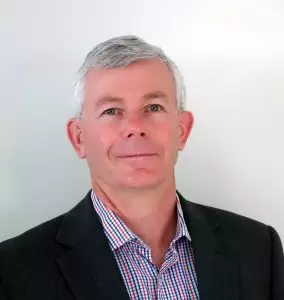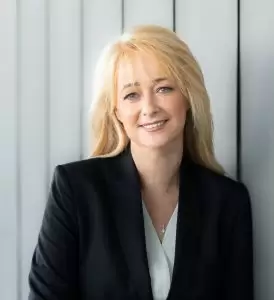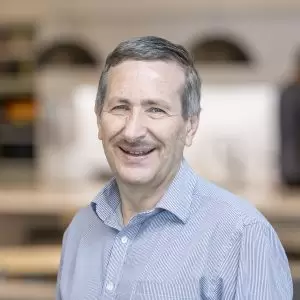Global asset management consultancy AMCL is leading the way in bringing retired engineers back into the fold, on their terms and in their own time.

Not long after he had retired from his role as General Manager Asset Management with Essential Energy, Paul Brazier MIEAust received a job offer from an AMCL Operations Director he’d employed many years earlier as a cadet engineer.
“So, the tables had turned,” Brazier smiles. “He had a small project he thought I might be interested in consulting to. And AMCL, like all engineering businesses, had a resourcing shortfall.”
That project led to another, and another. Along the way, Brazier was very clear about the fact that he only wanted to work around one-quarter of the time he did as a full-time employee. Plus, he wanted none of the pressure that came with managing large teams, relentless deadlines and long hours.
However, he also recognised the enormous benefits of working as a senior executive consultant on interesting projects.
“What it gives – as well as extra pocket money, which wasn’t the motivator – is a social opportunity,” he says. “I work with colleagues and clients from all over the country and overseas.”
“It’s also about using the skills you build up over many years and feeling useful, knowing you’re contributing to a project and, at the same time, lifting the skills of younger engineers.”
No pressure, huge reward

The intergenerational collaboration program, designed by Sandra Diethelm, AMCL’s Associate Director Strategy and Growth, focuses partly on the pairing of highly experienced, semi-retired engineers with younger talent.
The younger professionals will do the heavy lifting, and at the same time they will benefit enormously from the advice and mentorship of their more experienced colleagues.
“It’s no secret that there’s far more work in the market than firms can deliver,” Diethelm says. “The problem is not in attracting the work, it’s in getting the people who can do it.”
“One solution is semi-retired, 55-plus consultants. They have a tremendous amount of wisdom from decades of experience. But they don’t want to come back to the workplace and they don’t want a role that makes them responsible for major projects, for meeting deadlines, for working nightshifts, etc. They will not come back under those conditions.”
And so, Diethelm designed a program in which the burden of responsibility was removed from the older engineer, but where they could still enjoy the opportunity to be an important part of the project.
Part of the glue that holds the senior executive consultants together with their full-time colleagues at AMCL is the fact that they’re invited to all internal social events, including remote Friday drinks, which is work time and paid hours like full-time staff members. They’re also flown to a central location for a six-monthly get-together – the most recent was in Melbourne – for two or three days.
Fast-tracking skills in younger engineers

Zhen Wei Ooi, working as a Consultant with AMCL in Malaysia, is one of the younger engineers benefiting from AMCL’s pairing program.
Having graduated in 2019 and worked for three years in the oil and gas sector, Ooi began working with AMCL in mid 2022. The work she has been involved in since joining has mostly been in the electrical sector, including a project based in Canberra.
“We were conducting a gap and maturity assessment for an energy business, helping them to assess against the Australian Standard AS5577,” Ooi says.
“One part of the process was interviewing people within the client company. I worked with Colin Lambert, one of our Senior Consultants who had a vast amount of experience I could draw upon.”
“I have learned a lot from Colin. I wouldn’t be able to have this sort of knowledge otherwise, not without several years of working in the sector. And I feel it’s a mutual thing. He is helping me and I’m helping him in areas like data analysis.”

Golf and gardening don’t cut it
Robert Bruce CPEng, recipient of the NSW Service Medallion, was Manager Asset Initiatives (Sydney Trains) at Transport for NSW, prior to his retirement in 2018.
Having spent most of his career in rail, he left full-time work with a massive level of insight and knowledge.
“A lot of people say, when they retire, that they’re just going to play golf,” Bruce says. “But that’s not meaningful and I want to do more with my life. My career-learnt experiences and knowledge acquisition could still be utilised.”
Bruce had plans to travel with his wife and did so before travel was interrupted by the pandemic.
Bruce’s colleagues discussed consulting work after retirement. When they accepted such work, it often burgeoned into a full-time commitment for them. For Bruce, that wasn’t an attractive option.
Then he was contacted by AMCL.
“We have value to add to the profession,” Bruce says. “All senior engineers’ experiences are unique.
“I’m getting a lot out of utilising my skills. It’s really interesting to work with skilled people from around Australia and the world who have different perspectives and experiences. I’m really enjoying it.”




This is a great development but two key issues are a) maintaining PI insurance and b) remaining on the Engineers Register (e.g CPD requirements). Could you please explain how these are dealt with.
Hi Michael,
As casual employee your are covered by your employer’s PI insurance. If you choose to work as a sub-contractor you will need your own IP insurance and business/company (ABN).
CPD requirement: you can meet his through various ways, independent of the type of employment – https://www.engineersaustralia.org.au/membership/cpd-requirements
In relation to insurance: As casual employee you are covered by your employer’s PI insurance. If you choose to work as a sub-contractor you will need your own IP insurance and business/company (ABN). I hope this helps.
I returned to work about 5 years ago (at 70). A former customer rang and said that they had not won a contract since I retired (for 2 years) and that I had to go back to work. They were good people to deal with and I agreed subject to an increase in fees, morning only work and no time pressure. They agreed and I work remotely from home. It has been an enjoyable experience for the last 5 years and ongoing.
I retired from full time work last year as a Structural Engineer in Northern Tasmania. I can relate to this article. Since “retiring” I now work part time for up to 4 consulting firms, providing mentoring and experience gained over many years, to young engineers.
Please let us know of ANY retired engineers available (Mech/ El;ec/ Projects)
Very encouraging. Perhaps some of the top ASX engineering organisations can learn something from this story and set the lead.
We, the retired Engineers would love to work part-time and give back to the profession. However, the Professional Indemnity Insurance (PI) And the registration hurdle (NPER) together with the attitudes of many in the decision-making and HR in our profession, still hinder our efforts.
Also sometime, the restrictions on family matters (only two people in the home – with children living away) make it harder to relocate – which many employers require.
Once this is understood and sorted out, we will be happy to help.
Hi Pradip, Since the pandemic (Covic-19), we’ve found that many of our clients are open to remote working / remote consulting engagements. In relation to insurance: As casual employee you are covered by your employer’s PI insurance. If you choose to work as a sub-contractor you will need your own IP insurance and business/company (ABN). I hope this helps.
Anyone interested in working on a casual basis for AMCL, please register your interest here shorturl.at/lqu28 or reach out to me via email sandra.diethelm@amcl.com
Great initiative for advancing our engineering profession and mentoring those that follow and provide innovation to our world.
Very pleased to see Ron Bruce is back contributing.